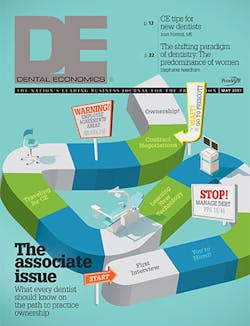Break the cycle: Your afternoon schedule doesn’t have to fall apart
“The afternoon just fell apart.” It’s a comment we’re hearing more frequently than ever before. Nothing wreaks havoc on your schedule or increases stress levels more than cancellations that throw off your schedule.
Broken appointments are also very costly. By our estimates, just one hygiene cancellation or no-show per day can cost a practice $25,000 per year. That number does not include the lost exam fee and potential diagnosis of treatment, which could easily increase the total by tens of thousands of dollars. Moreover, broken appointments add to the ever-increasing overhead percentages we’re seeing in most dental practices today.
The number one reason patients cancel or don’t show up to a hygiene appointment is value. Most of your patients wouldn’t dream of missing a hair appointment, a golf tee time, or even a 3,000-mile oil change. Yet they think hygiene appointments are no problem to skip.
Avoid devaluing your hygiene appointments by using phrases such as, “Mrs. Jones, let’s get you scheduled for your six-month cleaning and checkup.” It is difficult for the administrative team to defuse a potential cancellation call when the patient says, “I was just coming in for a cleaning, wasn’t I?” At the very least, change your verbiage to “your preventative care” or “professional oral health care.”
Always give the patient a compelling reason to return for an appointment. “Mrs. Jones, when we see you on June 10 at 8:00 a.m., we will be reviewing those bleeding areas of active disease and looking to see if there has been any improvement. Also, we will be monitoring the sensitivity on those lower right front teeth.”
Reappoint the patient while he or she is still in the chair. The patient will not be any more motivated than then. Your practice should have a goal of at least 80% of patients leaving with another hygiene appointment scheduled.
Does your office have a cancellation or no-show policy? If so, is it clearly communicated to patients? Do all new patients sign and receive a copy of it? At a minimum, your broken appointment acceptance should be 48 hours. Too many offices have a 24-hour broken appointment policy that does not allow enough time for the administrative team to backfill that appointment.
How does the team respond when a patient calls to cancel an appointment with short notice? Many times we hear, “That’s OK, Mrs. Jones. When would you like to reschedule?” It’s OK to put a little more pressure on patients. “Oh, no. Mrs. Jones, could you hold the appointment, please? During your professional oral health care appointment, Sarah was also going to be seeing you for that area of sensitivity on your lower right front teeth. Are you experiencing any sensitivity to hot or cold?”
Of course, we do not want to create an adversarial conversation with our patient. However, we do not want to give the patient permission to let us down. We teach people how to treat us. We also need to be careful not to preappoint patients who have let us down two or more times. We are not suggesting we dismiss these patients; just consider if they deserve a reserved time in your schedule. Perhaps being placed on a quick-call list would work better for both parties. First-time offenders should receive at least a phone call. A second offense warrants a letter from the office.
How does your office remind patients about their upcoming appointments? There are some very good patient communication programs available today. I get an e-mail notice reminding me to click and confirm my upcoming appointment two weeks ahead of time, then a text reminder three days out and on the day of my appointment.
To keep your hygiene schedule full, your first step is to track the number of broken hygiene appointments daily. Are you averaging two or more per day? Now you have a metric you and your team can check monthly to track your progress. Reducing your cancellations is a great way to build a more stable patient base, increase cash flow, and lower practice overhead.
Author’s note: For more help with patient appointments, schedule a free consultation at 360practicedevelopment.com.
Jim Philhower, a 28-year veteran of the dental industry, is the director of North America dental sales leadership and development for Henry Schein Dental. He teaches dental teams around the world techniques to help them reach their practice goals. Contact him at (800) 372-4346 or [email protected]
Learn more at HenryScheinBusiness Solutions.com.
Vanessa Buchheit has 16 years of experience in the dental field. After success as an office manager, Vanessa joined Henry Schein Dental as a practice development coach. She now provides coaching and systems implementation with a hands-on approach that increases production and reduces stress. Visit 360practicedevelopment.com to learn more. For a free consultation, contact her at [email protected] or (855) 801-1125.
